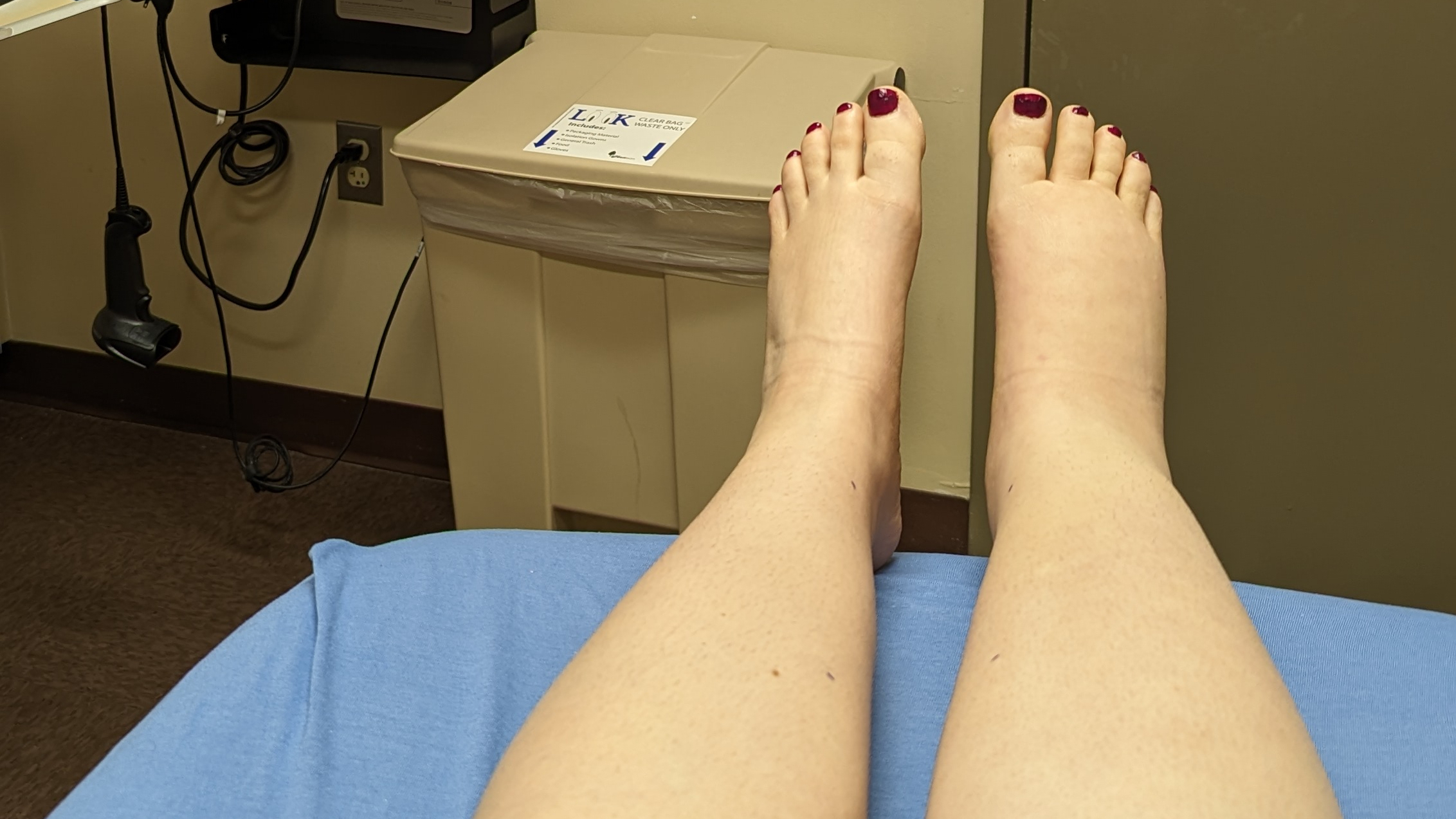Heather Ferguson hadn’t heard of lymphedema until 2006, after the birth of her twin boys. One of the infants – Dylan – had badly swollen legs and groin, and neither Ferguson nor the doctors knew what was causing it. After weeks of diagnostic tests and visits to specialists, Dylan received the diagnosis of congenital primary lymphedema.
Whatever relief the family felt at finally having a diagnosis was short-lived when seven-month-old Dylan was prescribed his first compression garment, and Ferguson was shocked to learn the medically necessary compression supplies were not covered by their insurance.
“I was outraged. It was adding insult to injury,” she says. “We’d already been through an ordeal just to get him diagnosed and thought the hardest part was behind us, only to find it wasn’t.”
Ferguson reached out to Bob Weiss, a long-time patient advocate who runs the website LymphActivist.org along with his wife, Pearl; from him she gained invaluable advice on how to advocate for better lymphedema treatment, which she immediately put into practice.
The first two years of her son’s life were spent appealing insurance denials and fighting for coverage. Eventually Ferguson decided that, instead of the constant back-and-forth, she would rather work to fix the problem once and for all.
“I couldn’t change that he had lymphedema,” she says. “But I became determined to make it easier for him to live with – and ensure he never had to go without treatment – by closing the insurance gap.”
A brief timeline of the Lymphedema Treatment Act
In 2009, Ferguson worked with her State Representative, Tricia Cotham, to introduce and pass the North Carolina Lymphedema Diagnosis and Treatment Act. Under this mandate, all private policies issued in the state of North Carolina are required to provide coverage for comprehensive lymphedema treatment, including compression supplies.
In 2010, Ferguson met with her Congressman, Larry Kissell, to introduce a federal bill called the Lymphedema Diagnosis and Treatment Cost Saving Act of 2010 – the first version of the Lymphedema Treatment Act. The bill would amend Medicare statute to allow for coverage of compression supplies for lymphedema patients by adding compression garments to the Durable Medical Equipment category. Although this legislation relates specifically to a change in Medicare law, it would set a precedent for Medicaid and private insurers to follow.
Ferguson realized she wasn’t going to be able to get the bill passed by herself, and so she founded the Lymphedema Advocacy Group, a non-profit volunteer organization that advocates for better coverage at both the state and federal levels.

Thanks to their lobbying efforts, the bill has been shepherded through five sessions of Congress. When Congressman Kissell was not reelected, Congressman Dave Reichert became the lead sponsor of the Lymphedema Treatment Act in 2013 and was its champion in the House through 2018. Congresswoman Jan Schakowsky will be introducing the bill in this Congress; a Senate companion bill sponsored by Senator Maria Cantwell was gained in 2016, who continues to lead the Senate bill today.

The length of time it takes to pass a federal bill is frustrating, says Ferguson, but she knows it is doable: the Lymphedema Treatment Act is the most supported healthcare bill of the last Congress, with a total of 451 cosponsors.
“That’s 80% of Congress!” exclaims Ferguson. “Not only is that level of support very, very rare, it also shows how far we have come, and how many staff members and members of Congress we have educated about lymphedema along the way.”
A part of the dance
A common adage says that if you stumble, make it part of the dance. Ferguson has made lymphedema advocacy a part of hers.
For those familiar with Ferguson or the Lymphedema Treatment Act, it may come as a surprise to learn that Ferguson has no background in advocacy work: she was a professional ballet dancer. As unlikely as it sounds, she says her former career prepared her very well for her current role.
“The same dedication, hard work, passion, and resilience that it takes to be a ballerina are also the most important ingredients for passing legislation,” says Ferguson. “Everything else can be learned.”
Ballet remains a part of Ferguson’s life – teaching and choreography provides a nice counterpoint to her advocacy work – but what really inspires her is the knowledge that this piece of legislation is going to help so many people.
“Every email sent through our website comes to me,” she says. “I hear from people on a daily basis who are confused, frustrated, struggling and sometimes suffering terribly due to lack of access to their compression supplies.”

The Lymphedema Treatment Act and its advocates have endured nearly a decade-long effort for recognition, and it’s easy to see how such a drawn-out process could be discouraging. Despite the frustrations, Ferguson says many positive things have occurred along the way, first and foremost being how it’s helped empower lymphedema patients by giving them a reason to speak out and something to coalesce around as a community.
The Lymphedema Treatment Act steadily gains more and more support with each Congressional session, and there is real hope that the legislation could be passed into law soon.
What does World Lymphedema Day mean to Heather Ferguson?
“Every day is Lymphedema Day in my world!” says Ferguson. “Lymphedema has become a defining feature of my life precisely because I didn’t want it to define my son’s life.”
People can practice lymphedema advocacy in their daily lives by talking to others around them about lymphedema, Ferguson continues. “Greater awareness will help us achieve all our other goals – better insurance covered through passage of the Lymphedema Treatment Act, more research, more clinicians who specialize in this area, et cetera.”
She also encourages people to contact their members of Congress and ask them to support this legislation. The website LymphedemaTreatmentAct.org offers several ways to do so, including ready-made telephone scripts, social media posts, and email forms to use when contacting your representatives.
And what about Dylan, the baby whose need for compression launched the legislation?
Dylan is an active, healthy, and happy child, something Ferguson acknowledges would not be possible if he didn’t have access to compression garments.
Dylan and his twin brother Devdan are both very aware of what their mom does, Ferguson says. Having homeschooled the boys from kindergarten through third grade, she made sure to teach them a lot about civic responsibility and how the government works.
“I don’t want them to feel like they need to be lymphedema advocates just because I am though, or because Dylan has lymphedema,” explains Ferguson. “I encourage them to advocate for things that they feel passionately about, that will make the world a better place.”





Leave a Reply